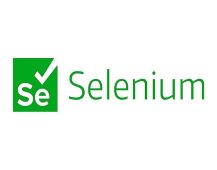A2Bookmarks Argentina Social Bookmarking Website
Descubre A2Bookmarks, el sitio web de marcadores sociales líder en Argentina, diseñado para optimizar tu experiencia en línea. Ya sea que desees guardar y organizar tus sitios web favoritos, compartir contenido valioso con la comunidad o explorar temas en tendencia, A2Bookmarks ofrece una plataforma amigable adaptada para los usuarios argentinos. Disfruta de una mayor visibilidad para tus marcadores, interactúa con contenido local y global, y únete a una vibrante comunidad de usuarios apasionados por descubrir y compartir lo mejor de la web. ¡Regístrate hoy y revoluciona la forma en que guardas y te conectas en línea con A2Bookmarks Argentina!


Assisted Reproductive Technology Device Market to Reach USD 47.8 Billion by 2032, Growing at 9.2% CAGR marketintelo.com
Introduction
The global Assisted Reproductive Technology Device market is witnessing robust growth as demand for infertility treatments continues to rise worldwide. Valued at USD 22.5 billion in 2023, the market is projected to reach USD 47.8 billion by 2032, expanding at a CAGR of 9.2% during the forecast period (2024–2032). Increasing infertility rates, delayed pregnancies, technological innovations in fertility devices, and supportive government policies are driving the market expansion.
Rising Infertility Rates Fuel Market Demand
Infertility has become a major global health concern, affecting millions of couples. Factors such as lifestyle changes, stress, obesity, environmental pollution, and rising maternal age have contributed to the growing prevalence of infertility. According to industry estimates, approximately 10–15% of couples face infertility issues worldwide. This rising need for effective reproductive solutions is driving demand for assisted reproductive technology (ART) devices, including incubators, micromanipulation systems, imaging systems, sperm separation devices, and cryosystems.
Technological Advancements in Fertility Devices
Continuous innovation in medical technology is enhancing the efficiency and success rates of ART procedures. Cutting-edge devices, such as advanced embryo imaging systems, time-lapse incubators, and AI-powered sperm analyzers, are revolutionizing the way fertility clinics operate. Automation and digitalization are reducing the chances of human error while improving patient outcomes. Moreover, minimally invasive devices with higher accuracy and precision are gaining traction, further fueling market growth.
Increasing Awareness and Accessibility of Fertility Treatments
Growing awareness regarding reproductive health and improved access to fertility clinics are significant contributors to market expansion. Many governments and private organizations are undertaking initiatives to reduce the stigma around infertility and promote ART procedures. Furthermore, health insurance providers in several countries are beginning to cover fertility treatments, making them more affordable. The rising number of fertility centers worldwide, particularly in emerging economies, is also widening patient access to advanced ART devices.
Market Segmentation Overview
The Assisted Reproductive Technology Device market can be segmented based on device type, procedure, end user, and region. Device types include imaging systems, incubators, ovum aspiration pumps, sperm separation devices, cryosystems, and micromanipulation systems. Key procedures supported by these devices include in-vitro fertilization (IVF), intra-cytoplasmic sperm injection (ICSI), and surrogacy. End users comprise fertility clinics, hospitals, and research laboratories. Regional analysis shows North America leading the market due to advanced healthcare infrastructure, while Asia-Pacific is expected to exhibit the fastest growth owing to increasing fertility awareness and healthcare investments.
Regional Market Insights
North America dominated the global ART device market in 2023, accounting for over 35% of revenue share. The region’s strong presence of leading fertility clinics, high healthcare spending, and favorable reimbursement policies are supporting growth. Europe is another prominent market, with rising demand for fertility preservation and surrogacy services. Meanwhile, the Asia-Pacific region is anticipated to register the highest CAGR through 2032, driven by rising infertility rates, growing medical tourism, and increasing adoption of advanced fertility devices in countries such as India, China, and Japan.
Competitive Landscape
The global Assisted Reproductive Technology Device market is highly competitive, with companies focusing on innovation, strategic collaborations, and mergers & acquisitions to expand their market presence. Key players include Vitrolife AB, Cook Medical, Merck KGaA, CooperSurgical Inc., Thermo Fisher Scientific, Genea Biomedx, Esco Medical, IVFtech ApS, and Hamilton Thorne Ltd. These companies are investing in advanced reproductive technologies, digital platforms, and AI-based solutions to enhance device accuracy and improve fertility outcomes.
Future Outlook
The future of the Assisted Reproductive Technology Device market looks promising as infertility treatments continue to gain acceptance worldwide. Technological breakthroughs in genetic testing, embryo screening, and non-invasive fertility monitoring devices are expected to further boost success rates. With increasing patient awareness, growing government support, and rising healthcare spending, the global ART device market is set to play a crucial role in shaping the future of reproductive healthcare.
Conclusion
The Assisted Reproductive Technology Device market is on a strong growth trajectory, supported by rising infertility rates, technological advancements, and greater accessibility to fertility treatments. With the market projected to nearly double by 2032, stakeholders, including healthcare providers, device manufacturers, and policymakers, are poised to benefit from this expanding sector.













